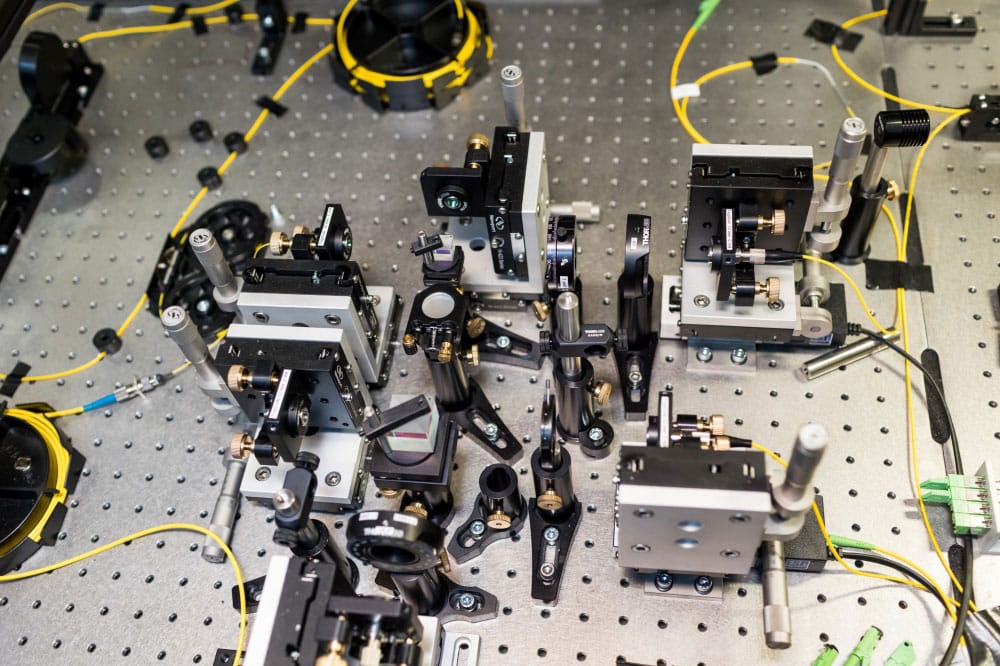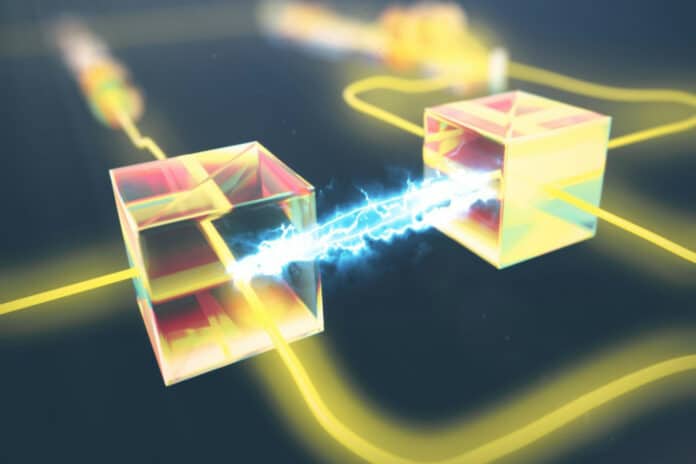Most quantum communication and computation methods today are based on bell-state projections. However, the maximum success probability of this crucial phase can be at most 50% since only two of the four Bell states can be recognized using the current Bell-state measurement systems based on linear optics.
Researchers from the University of Stuttgart have shown that a crucial component of many quantum computation and communication schemes can be carried out efficiently, surpassing the generally accepted upper theoretical limit, and opening up new possibilities for various photonic quantum technologies.
Using quantum effects in quantum technologies requires deep insight into the underlying quantum-physical principles, systematic methodological advances, and clever engineering. Scientists in this study delivered this combination: They have improved the efficiency of an essential building block of many quantum devices beyond a seemingly inherent limit.
Bell-state measurements, which identify which of the four states a quantum system is in, are crucial for applying quantum entanglement in real-world applications. There are four total Bell states. The most notable application of Bell-state measurements is quantum teleportation, which enables most quantum communication and quantum computation.
For quantum entanglement in practical applications, bell-state measurements, which reveal which of the four states a quantum system is in, are essential. There are four Bell states in total. Quantum teleportation, which permits most quantum communication and computation, is the most notable application of Bell-state measurements.
Here comes scientists with new Bell-state measurements in which they achieved a success rate of 57.9 percent.

How did they reach an efficiency that should have been unattainable with the tools available?
They used two additional photons in tandem with the entangled photon pair. Such ‘auxiliary’ photons offer a way to perform Bell-state measurements with an efficiency beyond 50 percent. Experimental realization, however, has proved elusive. This is due, among other things, to the requirement for advanced detectors to determine how many photons are impinging on them.
Scientists overcame this challenge by using 48 single-photon detectors operating in near-perfect synchrony to detect the precise states of up to four photons arriving at the detector array. This capability allowed scientists to see distinct photon-number distributions for each Bell state.
The efficiency could not be higher than 62.5 percent, even in principle, due to some overlap for the two initially indistinguishable states. However, the 50% ceiling has been broken. Additionally, the likelihood of success can be arbitrarily close to 100% without requiring additional ancillary photons.
Even the most complex experiment contains flaws; thus, it is crucial to consider this fact when analyzing the data and predicting how the method will perform in larger systems. To achieve their goal, the Stuttgart scientists collaborated with Prof. Dr. Peter van Loock, a theorist at the Johannes Gutenberg University in Mainz and one of the designers of the ancilla-assisted Bell-state measuring scheme.
Van Loock and Barz are involved in the PhotonQ partnership, which is supported by the BMBF and brings together academic and business partners from all around Germany to realize a particular kind of photonic quantum computer. One of the initial results of this cooperative effort is the improved Bell-state measurement technique.
Although the efficiency jump from 50 to 57.9% may appear slight, it offers a significant benefit when numerous sequential measurements are required, such as in long-distance quantum communication. It is crucial for such upscaling that the linear-optics platform has a low instrumental complexity compared to other methods.
The Barz group has developed new techniques that expand our toolkit for effectively utilizing quantum entanglement in practice. These opportunities are being thoroughly investigated by the local quantum community in Stuttgart and Baden-Württemberg under the auspices of projects like the long-standing research partnership IQST and the recently established network QuantumBW.
Journal Reference:
- M. J. Bayerbach, S. E. D’Aurelio, P. van Loock, S. Barz, “Bell-state measurement exceeding 50% success probability with linear optics”, Science Advances 9, 3209 (2023). DOI: 10.1126/sciadv.adf4080
